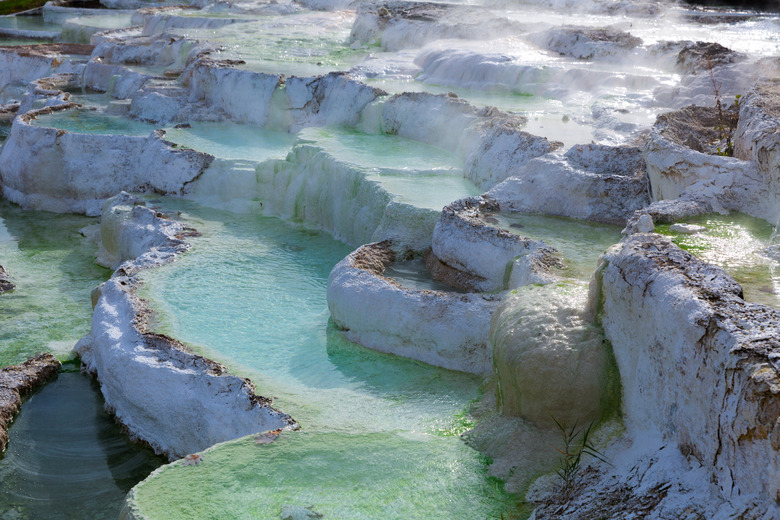Archaebacteria are organisms that are actually very different biochemically and genetically from other bacteria. Hence, archaebacteria is an outdated term, and they are now classified in the Archaea domain. Classifications within this domain are unofficial due to debates over the descendancy of microbes. Many live in the extreme temperatures of hydrothermal vents deep in the ocean or in hot springs and some live in oxygen-deprived mud. Others live in very salty water and still others in extreme alkaline or acid environments, or even in oil. The following examples are classified by the taxonomical order of kingdom, phylum, class, order, family, genus, and species.
Hydrothermal Vent Archaea
One example in the Archaea domain is Methanocaldococcus jannaschii, currently classified as Archaea: Euryarchaeota: Methanobacteria; Methanobacteriales: Methanobacteriaceae, Methanocaldococcus, and species jannaschii. It was obtained from a hydrothermal vent on the ocean floor living at pressures of more than 200 atmospheres and temperatures above 85 degrees Celsius. It survives without oxygen and produces methane as a product of its metabolism.
Archaea Thriving in the Human Gut
Methanibrevibacter smithii currently classified as Archaea; Euryarchaeota; Methanobacteria; Methanobacteriales; Methanobacteriaceae; Methanobrevibacter, and species smithii. It occupies the human gut and functions without oxygen. It converts CO2 to methane and is important in the breakdown of nutrients.
Salt Loving Archaea
Haloquadra walsbyi is currently classified Archaea; Euryarchaeota; Halobacteria; Halobacteriales; Halobacteriaceae; Haloquadratum; and species walsbyi. It resides in extremely salty environments and uses energy from the sun in the photosynthetic process. They are square-shaped and have gas-filled sacs that allow them to float. They can also link together and form large sheets.
Deep Sea Archaea That Use Sulfur
Thermococcus litoralis is another deep-sea thermal-vent species. It is currently classified as Archaea; Euryarchaeota; Thermococci; Thermococcacae; Thermococcus; and species litoralis. It requires sulfur to grow and, unlike the other examples, it does not produce methane. It thrives in high temperatures and is one of the archaea, including yet-to-be-discovered species.
Small, Parasitic Archaea Stands alone in Classification
Nanoarchaeum equitans is the only known member of the Nanoarchaeota subclass of Archaea. Scientists found it living on the cell walls of a new Ignicoccus species found at the bottom of the ocean, near thermal vents, and in a hot spring located in Yellowstone National Park. Nanoarchaeum equitans, which appears to have a parasitic relationship with the Ignicoccus species, is small, only 400 nanometers in diameter, and seems to thrive in temperatures between 167 and 204 degrees Fahrenheit.

